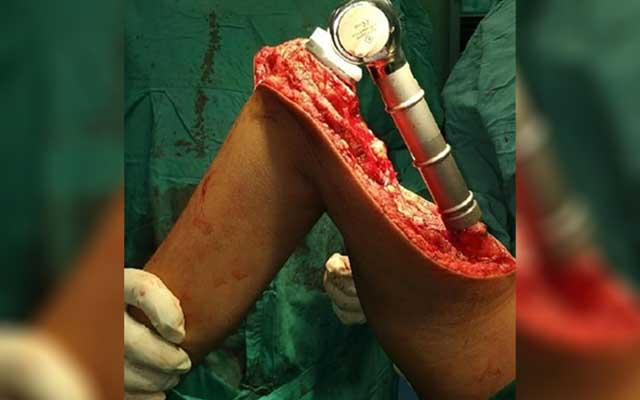In any bone of the body, bone cancer can begin but normally the pelvis or the long bones in the arms and legs are affected by it. Less than 1 percent of all cancers is bone cancer and for this reason, it is considered to be rare. Some bone cancers affect mainly adults whereas some types occur primarily in children. The most common treatment is surgical removal but chemotherapy and radiation therapy must be utilized. Based on the type of bone cancer being treated, a cancer doctor decides whether to use surgery, chemotherapy or radiation therapy.
Symptoms
Bone cancer has different signs and symptoms. These include:
- 1] Pain in the bone
- 2] Tenderness and swelling near the affected area
- 3] Fracture due to weakened bone
- 4] Fatigue
- 5] Unintended weight loss
When to see a doctor
If you develops bone pain with the following characteristics, consult an oncologist.
- 1] The pain comes and goes.
- 2] The pain becomes worse at night.
- 3] The pain does not lessen by over-the-counter pain relievers.
Causes
In most of the bone cancers, the cause is unknown. Hereditary factors are linked to a small number of bone cancers while previous radiation exposure has been related to others.
Types of bone cancer
Based on the type of cell where cancer began, bone cancers are broken down into separate types. The following are the most common types of bone cancer.
-
Osteosarcoma :
Among bone cancers, the most common form is Osteosarcoma. The cancerous cells produce bone in this tumour. In the bones of the leg or arm of children and young adults, this variety of bone cancer occurs most often. Osteosarcomas can arise outside of bones in rare circumstances (extraskeletal osteosarcomas).
-
Chondrosarcoma :
Among bone cancers, the second most common form is Chondrosarcoma. The cancerous cells produce cartilage in this tumour. In the pelvis, legs or arms of middle-aged and older adults, Chondrosarcoma usually occurs.
-
Ewing sarcoma :
In the pelvis, legs or arms of children and young adults, Ewing sarcoma tumours most commonly arise.
Diagnosis
Bone scan, computerized tomography (CT), magnetic resonance imaging (MRI), positron emission tomography (PET) and X-ray are some of the tests done to determine the location and size of bone tumours. They are also used to find whether the tumours have spread to other parts of the body. Sometimes, needle or surgical biopsies are also used for diagnosis of cancer. A cancer specialist tries to determine the extent (stage) of cancer after he or she confirms a diagnosis of bone cancer.
Treatment
Main aim is to remove the tumor completely as these tend to metastasize very early. Conventionally a lot of them would undergo amputation which left the patients with disability. Now with better understanding of diseases “limb preserving surgeries” are the most preferred surgeries and preformed by Surgical Oncologist. Eveng in certain tumor with single ie, oligometstasis surgery with metastatecomy are performed by cancer Surgeon. With the Advent of customized megaprosthesisthe variety of surgery and quality of life post surgery has increased.

